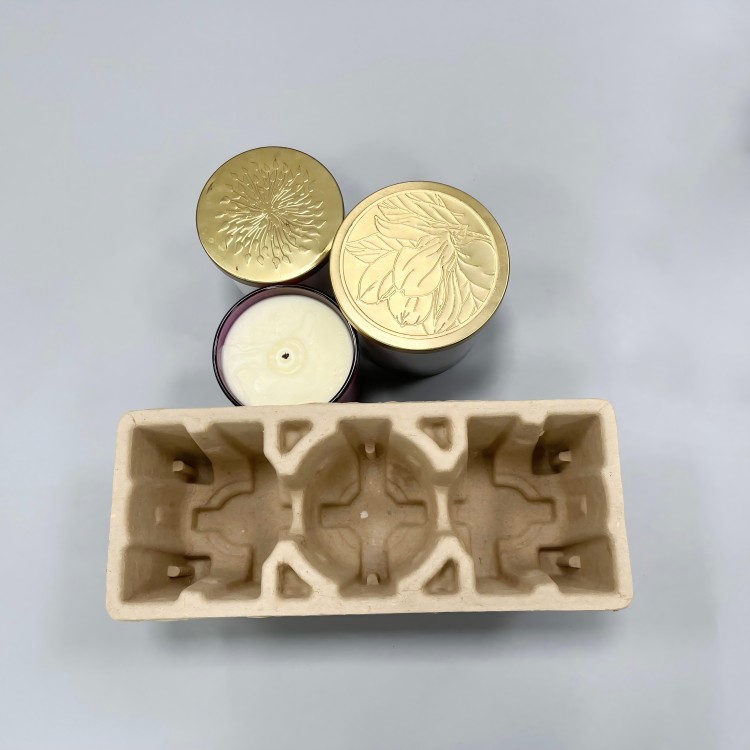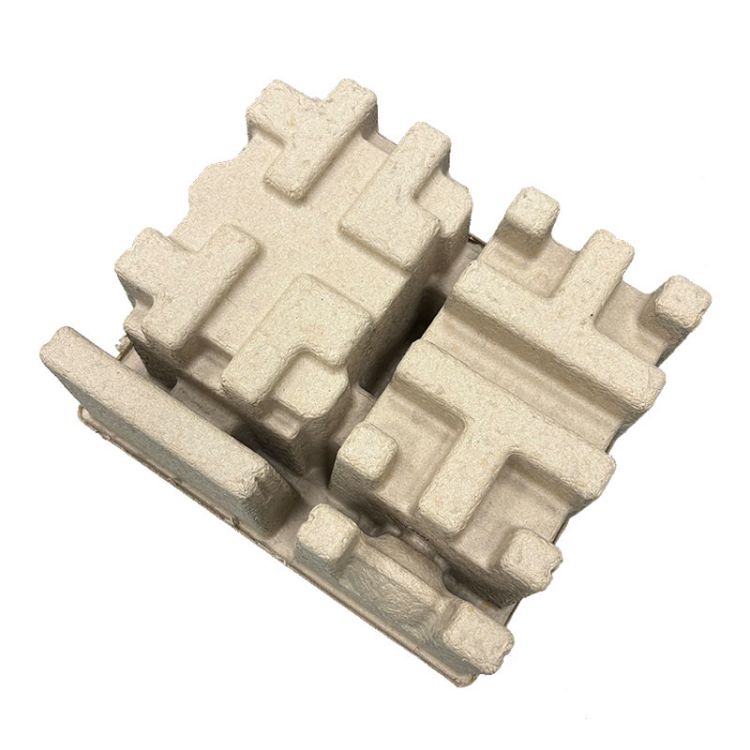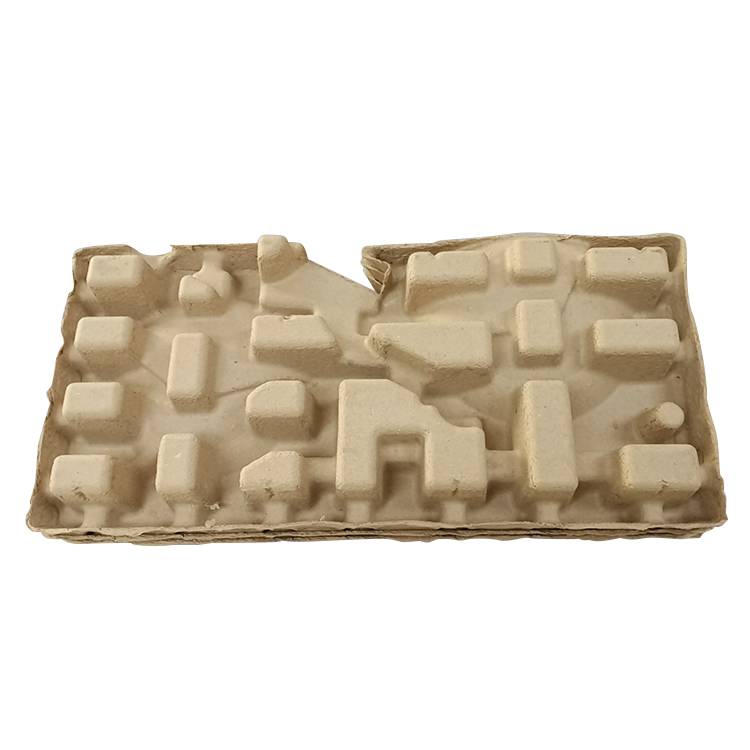Dry pressed molded pulp products are gaining popularity due to their eco-friendly nature, with most of them made from recycled paper, which aligns with the global push for sustainable and green packaging solutions. These products are increasingly favored by companies in various industries, including consumer electronics, home appliances, communication equipment, glassware, cosmetics, healthcare products, alcohol, fruits, and poultry packaging.The dry pressing method used in molded pulp packaging relies heavily on recycled paper as raw material. However, due to limitations in raw material quality, production processes, and equipment, the surface of dry pressed molded pulp products often appears rough, uneven, and varies in thickness. As a result, these products are primarily used for industrial goods, poultry packaging, and agricultural products, where the focus is on functionality rather than aesthetics.
1. Addressing the Rough Texture of Dry Pressed Products
When clients receive our dry pressed pulp products, their first impression often stems from visual and tactile experiences. A common question arises: Why is the surface of these products rough, uneven, or sometimes cracked? This rough appearance has become a recurring issue in dry pressed pulp packaging, leading to concerns from customers.The answer lies in the nature of the raw materials and the limitations of the dry pressing method. Recycled paper fibers, which are used in this process, are less refined than those used in wet-pressed pulp products. The dry pressing method also uses less water, resulting in a coarser texture, as the pulp doesn’t bond as smoothly as it would in a wet-pressed process. Additionally, because the dry pressing process doesn't involve high-pressure refinement, the fibers don't compress evenly, leading to uneven surfaces.

2. Comparison with Wet Pressed Molded Pulp
In contrast, wet pressed paper pulp products offer a smoother and more refined appearance. The wet pressing process involves more water and finer pulp fibers, which allows for a smoother surface finish. As such, these products are used in packaging for high-end electronics, household appliances, instruments, hardware tools, and even cosmetics and food products. This type of packaging is seen not only as protection but also as a way to enhance the product’s overall appeal.

3. Understanding Client Requirements
Not all customers prioritize the aesthetic quality of the packaging. For example, products like poultry and industrial equipment primarily require the packaging to provide protection, and dry-pressed fiber packaging is sufficient for this purpose. However, for products with higher added value, such as electronics or appliances, the appearance of the packaging becomes an essential factor. In these cases, packaging functions as a branding tool, and customers expect a smoother, more premium look.

3. Explaining to Clients
When explaining the rough texture of dry pressed fiber packaging products to clients, it’s essential to be transparent about the production limitations and the purpose of the packaging. Clients should understand that while the surface may be rough, the packaging is designed to protect their products efficiently. Moreover, if a smoother and more refined surface is necessary, switching to wet pressed pulp packaging might be a viable option to meet those specific needs.
In conclusion, while the rough surface of dry pressed molded pulp products may raise concerns, it is essential to communicate the benefits of this packaging method—its sustainability, cost-effectiveness, and functionality. Understanding the varying demands of different industries will allow businesses to recommend the most suitable packaging solution for each customer.

